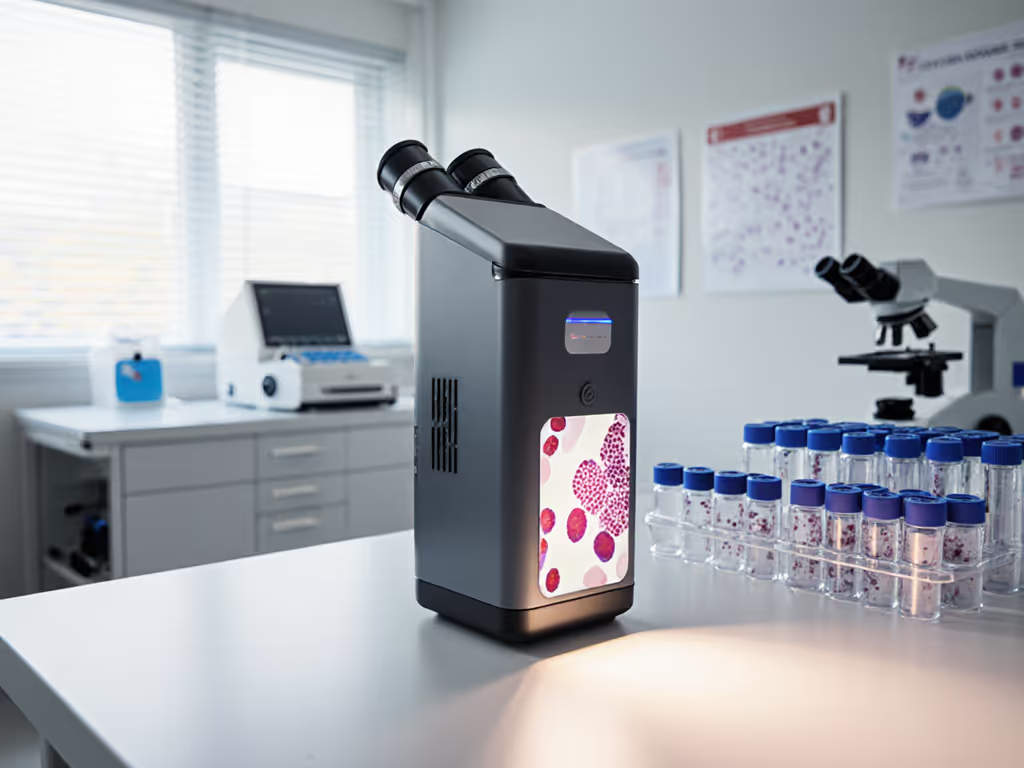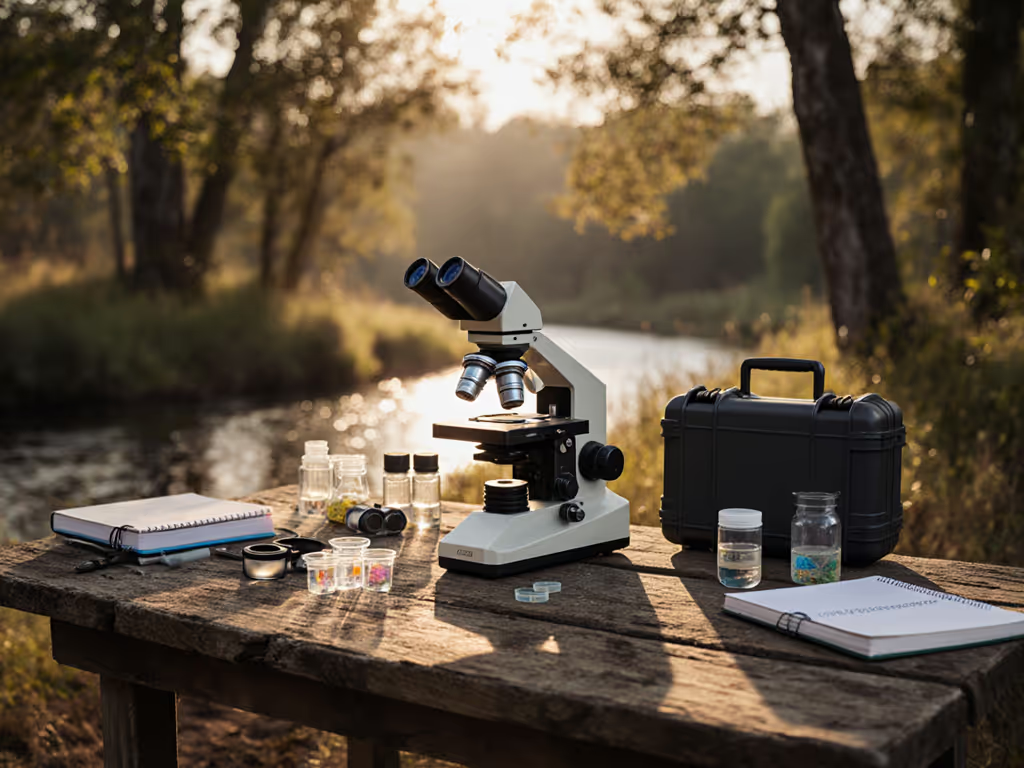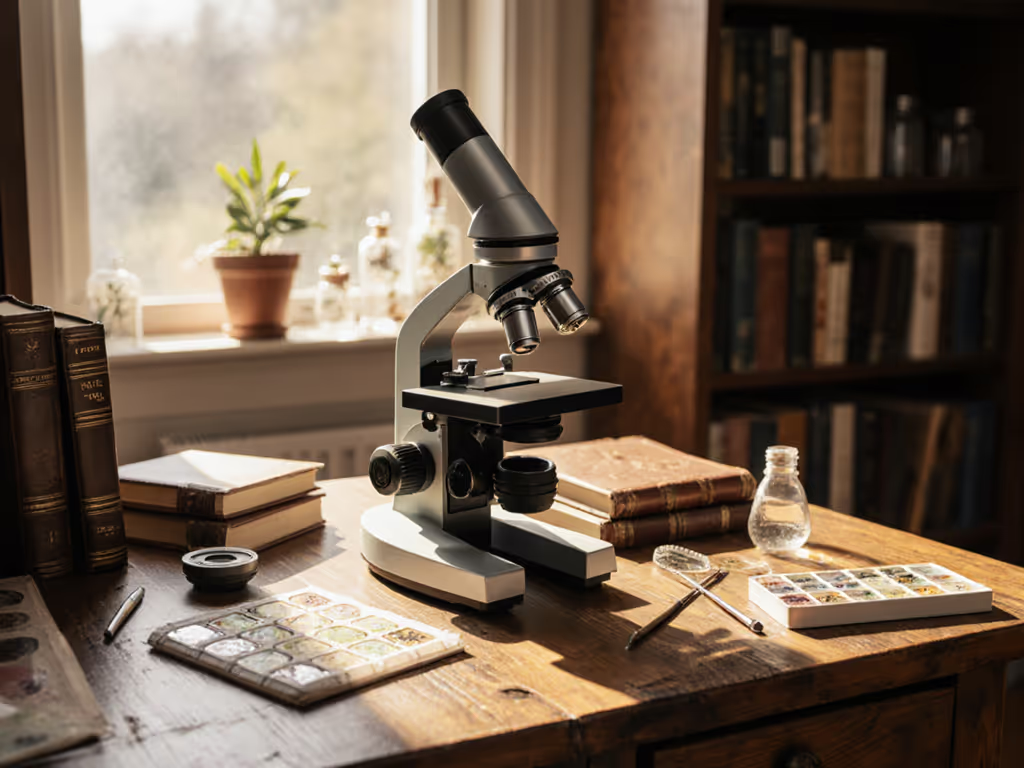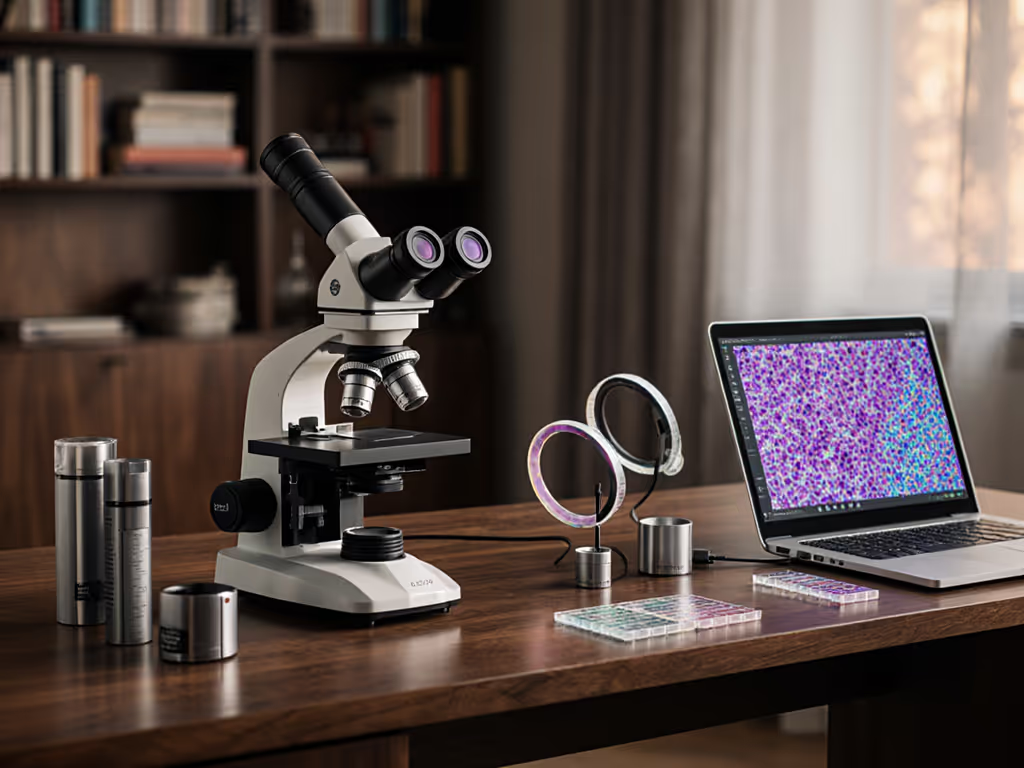
Microscope Kits for Schools: Your Step-by-Step Buying Guide

Choosing the right microscope kits for schools can feel overwhelming, especially when you're balancing tight budgets, varying student skill levels, and the dream of making every "aha!" moment count. But what if I told you that the secret isn't fancy specs or sky-high magnification? It's starting simple. Like the time I watched a nine-year-old spot tardigrades using just a $2 plastic pipette, a recycled slide, and a flashlight. That child's gasp of wonder? That's the magic we're after. With the right educational microscope accessories in hand, you don't need a lab budget to create repeatable discoveries. Let's walk through how to build a classroom toolkit that turns hesitation into hands-on confidence (without drowning in jargon or debt).
Curiosity scales with confidence.
Why Most School Microscope Kits Fail (And How to Avoid the Trap)
Many teachers jump straight to buying microscopes first, only to realize they're missing the tools that actually make lessons stick. I've seen classrooms where students spend entire periods struggling with sticky slides or dim lighting, while the wonder evaporates. These kits fail because they ignore two truths:
- Students learn by doing, not just observing: If prep feels tedious, engagement plummets.
- Teacher time is precious: Complicated set-ups eat into valuable class minutes.
The fix? Start by asking: "What small win will make my students smile today?" Maybe it's seeing onion cells wobble or pond water dance. That's where your kit-building journey begins.
Step 1: Assess Your Real Needs (Grade Level Matters)
Don't assume a "one-size-fits-all" kit works for K-12. I've helped dozens of schools customize their toolkits, and the biggest "aha" is always grade-specific tweaks.
For Elementary Classrooms (K-5)
- Focus: Big, colorful specimens (insect wings, leaves, fabric fibers)
- Must-haves:
- Battery-powered microscopes (Celestron S20 Portable works great outdoors)
- Pre-mounted slides (avoids fiddly slide prep)
- Wet mount kits with disposable pipettes and coverslips
- Skip: Complex staining or oil immersion
Pro Tip: Young kids lose interest fast if lighting's too dim. Look for microscopes with dual LED (top + bottom) like the National Geographic Dual LED, it's a lifesaver for opaque objects like coins or feathers.
For Middle/High School (6-12)
- Focus: Biological structures (cells, bacteria), minerals, forensic fibers
- Must-haves:
- Compound microscopes with 40x-400x range (no need for 1000x yet!)
- Stain kits (safranin for plants, methylene blue for cells)
- Mechanical stages (lets students smoothly navigate slides)
- Skip: Overpriced digital add-ons (more on this later)

Step 2: Budget Like a Pro (Without Sacrificing Quality)
I get it, district budgets are tight. But cheap microscopes cost more long-term. They break, frustrate students, and end up gathering dust. Focus on value per hand: how many students can safely use this tool per class period?
Smart Spending Strategies
- Bundle over buy: Look for "classroom microscope kit" bundles that include:
- 10+ blank slides & coverslips
- Basic stain vials
- Lens cleaning wipes
- Storage cases (Example: Omano OM136C kits often include these)
- Prioritize durability: Metal-bodied microscopes (like Celestron CM800) survive student handling better than plastic.
- Avoid "upgrades" you won't use: Fancy cameras aren't worth it if your current model lacks proper lighting. Fix the foundation first.
Real talk: A $250 kit that lasts 5 years beats a $150 kit replaced yearly. That's STEM education sustainability.
The Number Teachers Never Hear: 3-5x
Your microscope should support 3-5 students per unit rotating through stations. Why? It builds teamwork and reduces "waiting boredom." In a 25-person classroom, 5 microscopes + matching accessory kits is ideal, not one demo unit at the front.
Step 3: The 5 Non-Negotiable Accessories (Most Kits Skimp On These)
Here's where standard kits fall short: they omit the prep tools that turn "meh" into "WOW." This is where investing in educational microscope accessories pays off.
1. Slide Storage Solutions
- Problem: Loose slides = broken slides + chaos
- Fix: Slide boxes with dividers ($8-$15). Teach students to label with pencil (ink smudges!).
- Why it matters: Organized storage saves 10+ minutes per class, time you spend teaching, not troubleshooting.
2. "Forgiving" Sample Prep Tools
- Problem: Kids tear slides trying to position specimens
- Fix: Plastic forceps + plastic dissecting needles (not metal, they scratch!)
- Beginner hack: Use clear nail polish to seal wet mounts (dries in 60 seconds)
3. Two-Ply Cleaning Supplies
- Problem: Fingerprint-streaked lenses from rough wiping
- Fix: Microfiber cloths (not paper towels!) + lens-safe spray
- Teacher tip: Keep a cleaning caddy at each station, no more tracking down supplies mid-activity.
4. Age-Appropriate Stains
- Elementary: Food coloring drops in water (safe, instant color)
- Middle/High: Pre-diluted methylene blue (longer shelf life than powder)
- Golden rule: Store stains in dropper bottles, no measuring required.
5. Dry Erase Specimen Cards
- Problem: Students forget what they're looking at
- Fix: Laminate cards with simple sketches ("This is a leaf vein!"). Kids draw observations right on the card.
- Perk: Reusable, no printing costs.

Step 4: Top 3 School-Tested Microscope Kits Compared
Based on testing with real classrooms, here's what works right now, not what specs promise.
1. Swift SW380T: Best for Growing Skills (Grades 6-12)
Why teachers pick it:
- Gentle learning curve: Dual eyepieces adapt to kids with vision differences
- No-squint lighting: Adjustable LED dimmer wheel (my #1 requested feature!)
- Upgrades smoothly: Trinocular port lets you add a basic webcam later
Real-classroom feedback: "The mechanical stage is a game-changer. No more cranking knobs off-track!" - Maria K., 8th-grade science
Skip if: You need portability for field trips (it's desktop-only).
2. Celestron CM800: Best Budget Workhorse (Grades 3-8)
Why teachers pick it:
- Takes drops & spills: All-metal body survived my "water test" (yes, I poured juice on it)
- Batteries included: 3 AA batteries = instant setup for outdoor labs
- Slide-friendly clips: Holds specimens securely without crushing them
Real-classroom feedback: "The 400x max is plenty for pond water. We had kids identifying paramecium by week two!" - David R., elementary STEM coach
Skip if: You need digital imaging (requires separate adapter).
3. Dino-Lite AM2111: Best for Early Engagement (Grades K-4)
Why teachers pick it:
- No eyepiece stress: Kids see specimens on screen instantly
- Pain-free focus: Twist the body, no confusing knobs
- Capture & share: Take photos/videos via free software
Real-classroom feedback: "The shyest kid in class showed me her ladybug photo. First time she raised her hand all semester!" - Lisa T., kindergarten
Skip if: You need high magnification (max 230x).
Pro Comparison: For pure value under $200, the Celestron CM800 hits the sweet spot between cost and classroom toughness. But if your students struggle with traditional eyepieces, the Dino-Lite AM2111 reduces frustration fastest.
Step 5: Make It Stick - Your Teacher Setup Checklist
You've got the kit. Now let's ensure it stays useful all year:
✅ 5-Minute Daily Habits
- Before class: Wipe eyepieces with microfiber cloth (not shirts!)
- During lab: Assign "Tool Captain" to check slide cleanliness
- After class: Store microscopes without slides to avoid cracked lenses
🌱 Foster Repeatable Discovery
- Low-stakes challenges: "Find something blue in pond water!" (stains make this possible)
- Celebrate small wins: "Jada kept her slide steady for 2 minutes (let's give her a round of applause!)"
- Connect to big ideas: "These leaf cells? They're why trees make oxygen for us."
🚫 Never Do This
- Don't skip basic lens care (dust = blurry images = lost interest)
- Don't force 1000x magnification too early (empty zoom frustrates beginners)
- Don't isolate the microscope in a closet (treat it like the excitement hub it is!)
Wrapping Up: Your First Small Win Awaits
Buying microscope kits for schools shouldn't feel like deciphering a manual in another language. Start with one adjustable LED microscope, ten blank slides, and food coloring stains. Let students find wonder in dandelion fuzz or sugar crystals. That first "Whoa!" moment? That's the spark. Small wins today grow into tomorrow's confident discoveries.
Curiosity scales with confidence.
Related Articles



Top Microscope Kits for Kids: Safe & Educational Choices
Cut through marketing and choose a kid-safe microscope that actually teaches, with test-backed feature criteria, safety must-haves, and clear recommendations for different ages and budgets. Learn the essential accessories and setup habits that keep young scientists engaged and successful at home.

Best Value Microscope Starter Bundle: Hobbyist Ready
Choose a starter microscope bundle that prioritizes ergonomics, compatibility, and balanced optics, backed by a field-tested pick with transparent pros and cons. Use the ergonomic setup checklist and a few low-cost add‑ons to reduce fatigue, improve imaging, and keep sessions enjoyable longer.

Premium Microscope Accessories: High-Resolution Imaging Kit
Build a high-performance imaging kit by choosing components based on measurable metrics - NA, contrast retention, illumination uniformity, CRI, and workflow - not price tags. Access tested recommendations and an incremental upgrade path that deliver better results per dollar.
